Body Lift in Metro Manila
Search and Compare the Best Clinics and Doctors at the Lowest Prices for Body Lift in Metro Manila

Find the best clinics for Body Lift in Metro Manila
With Medijump you can browse 3 facilities offering Body Lift procedures in Metro Manila. The cheapest price available is $216 in Metro Manila. And for the cheapest price globally, prices start from $216 in Philippines.
Body Lift in Philippines
Price: $ 216
Body Lift in Metro Manila
Price: $ 216
Philippines offers the best prices Worldwide
Price: $ 216
From 93 verified reviews
Steve Frost, 20 September 2020
Best hospital in delhi ncr. Good quality of treatment and takes good care of patients.
From 133 verified reviews
Mari Delos Santos, 16 April 2020
The main lobby will give you a feeling of being in a resort or hotel lobby. The newly open Central Park will be an extra treat, an amenity area that will give patients and visitors the feeling of being at home in their own garden. Doctors here are the best in the country. State of the art facilities and high tech medical equipment. How I wish every Filipino can experience the medical care and assistance at Thé Medical City.❤️ March 4, 2020, I went to the Ambulatory Service Center- as usual long line but patients are comfortably seated and patiently waiting. I have been on food and water fasting for my blood extraction. Not to over fast I approached the lady at the counter 4, to let her know of my situation. She was so quick in attending to my concern and never ask for anything, not even my ID or HMO. She accompanied me at the blood extraction area and everything I need was well taken cared of because of her. Thank you very much Ms. Maria Concepcion Calayan Golla for your kind assistance and compassion. Keep up the excellent work. May your tribe increase. All the best!❤️
From 2 verified reviews
Eddy Pedro, 11 September 2020
Very nice and our number one actress Julia montes I greet u
- Home
- Philippines
- Metro Manila
Compare Before & After Photos of _procedure_photos.phpBody Lift


Front view


Half-side view
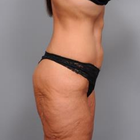
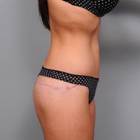
Full-side view


Front view
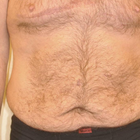
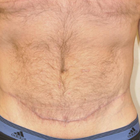
Front view
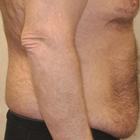
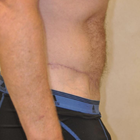
Half-side view


Front view
WHY US?
At Medijump, we're making medical easy. You can search, compare, discuss, and book your medical all in one place. We open the door to the best medical providers worldwide, saving you time and energy along the way, and it's all for FREE, no hidden fees, and no price markups guaranteed. So what are you waiting for?

Free

Best Price

Widest Selection

Risk-Free
What you need to know about Body Lift in Metro Manila

If you're considering a Body Lift procedure, you can trust the skilled surgeons in Metro Manila to refine your body contours. This operation primarily aims at removing excess sagging skin and fat, commonly post significant weight loss. The entire process can take anywhere between 3-7 hours.
Having a detailed discussion with the surgeon before the procedure ensures that the patient is fully aware of what the procedure entails, risks involved, post-surgery care, and changes to anticipate.
What is the cost of Body Lift in Metro Manila?
The cost for Body Lift surgery varies widely in Metro Manila, typically ranging around $15,000 to $30,000. These costs include a myriad of factors such as the surgeon’s charges, anesthesiology, operating room costs, and any other additional expenses required like specialised equipment or scar reduction creams.
However, it’s crucial to prioritise quality and safety over cost when deciding to go ahead with the procedure. After all, your physical well-being and self-confidence are invaluable.
What does a Body Lift Procedure Involve?
A Body Lift procedure is conducted under general anaesthesia wherein the surgeon makes specific incisions around the lower waist and upper thigh region to remove excess skin. Often, other procedures like liposuction can be undertaken to eliminate persistent fat deposits. Moreover, supplementary procedures such as liposuction can also be employed to get rid of persistent fat deposits, thus achieving a more defined body silhouette. After achieving the desired results, the incisions are meticulously sealed off using sutures, skin adhesives, or surgical tapes.
Bear in mind, while we have tried to explain the process, every Body Lift procedure is unique to the individual being treated. Therefore, the procedure's length and exact practices may vary depending on the patient's health status and the extent of sculpting required. It is this personalized approach that ensures the optimal outcome and patient satisfaction. Therefore, an in-depth consultation with your surgeon is necessary to fully understand the procedure's depth and commitment required.
How Long Should I Stay in Metro Manila for a Body Lift Procedure?
The timeline of your stay in Thailand for a Body Lift operation largely hinges on numerous factors. These can include preparation leading up to the surgery, your rate of healing, and the requirement for supplementary treatments. As a general rule, a Body Lift surgery is executed within a single day. Depending on how swiftly you recover and your overall well-being, you might be discharged on the same day or necessitate an overnight stay for observation.
Further, it's typically advantageous to continue your stay in Thailand for a period following the procedure. During this time, any follow-up appointments can be attended, and sutures, if used, may be safely removed. This post-surgery process can last for about a week or two, but a precise time frame can be given only after discussions with your treating physician. Prioritising a thorough recovery process is central to obtaining the best surgical results and minimising the possibility of complications.
What's the Recovery Time for Body Lift Procedures in Metro Manila?
Getting through a Body Lift Procedure in Metro Manila is only the beginning. The following weeks will be all about healing and recovery. Much like with every major surgery, the healing period varies with each person—it's comprehensively individual. But if we're to talk numbers and averages, the initial recovery phase usually lasts between about two weeks to a month. During these weeks, it's completely normal to experience some puffiness, bruising, and even some discomfort.
However, while the initial healing phase could be measured in weeks, complete healing can be slightly more extended—extending up to six months. The journey can be long, indeed. But remember, patience and discipline are what will get you through. You should take it easy and avoid heavy physical activities; instead, focus on eating right and sleeping well as this aids the speedy recovery. Of course, your doctor will be there to guide you, providing all the necessary instructions and advice relating to medications, wound care, and what to look out for. And they'll tell you this too sticking to these instructions is absolutely essential for a successful recovery.
What's the Success Rate of Body Lift Procedures in Metro Manila?
Body Lift surgeries conducted in Metro Manila have consistently demonstrated an outstanding degree of success, largely creditable to the skill set of seasoned surgeons located in the region. Here, the word 'success' extends beyond the visible physical improvements observed post-surgery. It further includes the intangible yet significant gains such as a surge in self-esteem and overall enhancement in the way of life that patients commonly report following the procedure.
However, it's vital to take note that the results of this procedure are not exclusively in the hands of our accomplished healthcare professionals. Patient participation is a key factor in ensuring a good outcome. Adherence to the advice given by the physician before and after the surgery, commitment to a healthful lifestyle, and holding realistic goals regarding the outcome of the surgery are critical aspects in the pursuit of a satisfactory and enduring outcome. In essence, the surgical outcome relies on a two-way relationship – the medical proficiency of the surgeon coupled with the patient's dedication towards their health and welfare.
Are there Alternatives to Body Lift Procedures in Metro Manila?
Though body lift surgeries are widely recognized for their effectiveness in enhancing body contours, they don't stand alone as the sole solution. In Metro Manila, you'll discover a variety of non-surgical and less invasive treatments for both skin tightening and body reshaping. These include:
- Laser therapies: This approach doesn't require any operation or invasive method. It uses a specific kind of light source (an infrared laser) to heat the collagen, a protein situated under your skin. This heating effect causes the skin to contract, leading to a tightened feel and look.
- Radiofrequency therapies: This harmless procedure triggers collagen production and the contraction of tissues through radio waves. As a result, your skin becomes firmer and gets a rejuvenated glow. It also helps reduce wrinkles and sagging.
- Cryolipolysis (CoolSculpting): This treatment cools down fat cells to a temperature that alters their structure until your body naturally gets rid of them.
- Liposonix: This method engages a non-invasive, high-intensity ultrasound technology to eliminate specific sections of fat beneath your skin, delivering consistent and expected results.
It's important to remember that while these treatments can provide significant benefits, they may not achieve the same long-lasting and striking results as a Body Lift procedure. Therefore, it is always best to consult with an experienced surgeon or healthcare professional in Metro Manila to get advice tailored to your specific needs and circumstances.
What sort of Aftercare is Required for Body Lift Procedures in Metro Manila?
Successful recovery from a body lift procedure in Metro Manila requires diligent aftercare. Post-procedure recommendations often include:
- Wound Care: Regularly cleaning and dressing the surgical wounds as advised by the healthcare provider.
- Medications: Taking prescribed medications timely to manage pain and prevent infections.
- Restrictions on Activities: Refraining from vigorous physical activities for at least a few weeks after surgery to allow the body time to heal.
- Hydration and Nutrition: Maintaining a well-balanced diet high in proteins and staying hydrated to facilitate healing.
- Follow-Up Consultations: Attending regular follow-up appointments with your healthcare provider to monitor the healing progress and address any complications at their earliest.
Remember, every individual has different healing rates, and commitment to the aftercare guidelines will ensure faster recovery and better results.
Can Body Lift Procedure Improve the Overall Health?
Beyond enhancing one's figure, a Body Lift Procedure positively impacts overall health and mobility. It helps combat skin problems like rashes and infections and improves body mobility by eliminating excess skin.
And let's not forget the mental well-being link here. This surgery can give self-confidence a giant boost and can have you feeling better about how you look, contributing to your mental health in a big way.
However, this procedure is not a shortcut to weight loss—it should ideally be performed once significant weight loss has already taken place. As with all surgical procedures, the decision should be made under the guidance of healthcare professionals, weighing the benefits against the risks.
Can Body Lift be Combined with Other Procedures?
Combining a Body Lift with other surgeries like breast enhancement or facial beautification is common practice in the field of cosmetic surgery. This technique yields a significant advantage of a single recovery process and reduced overall costs.
However, this decision rests on the patient's overall health condition and the complexity of the involved procedures. Therefore, we recommend having an in-depth discussion with your chosen surgeon to weigh your options.
What's the Impact of Weight Fluctuation After a Body Lift?
Significant weight changes after a Body Lift procedure can profoundly impact the aesthetic results and possibly present health risks. The effects of such weight changes typically include:
- Weight Gain: Substantial weight gain post-surgery can cause the skin and tissues to stretch again, negatively affecting the improved body contour achieved from the procedure.
- Weight Loss: On the flip side, extreme weight loss can lead to additional sagging and loose skin, diminishing the aesthetic improvements from the body lift.
Maintaining a stable and healthy weight is key to preserving the benefits of this procedure. Achieving this entails:
- Balanced Diet: Consistently adhering to a nutritionally balanced, portion-controlled diet.
- Regular Exercise: Engaging in regular, moderate physical activities to aid in maintaining your weight.
A body lift procedure, however, is not a replacement for a healthy lifestyle or a weight-loss solution. It should ideally be performed post-significant weight loss to help reshape and redefine the body contours. As with any surgical procedure, it's essential to have the guidance and approval of your healthcare provider to ensure optimum results and uphold your safety.
Is the Body Lift Procedure Safe for Older Adults?
Age isn't necessarily a determinant for whether someone can undergo a Body Lift operation; it's all down to their overall health and fitness. Even though healing might be slower in the elderly, and they may have a higher risk of surgical complications, they are not necessarily exempt from considering this procedure.
Therefore, it's crucial to have a comprehensive medical evaluation and a thorough discussion with the healthcare provider about the expected results versus the potential risks involved.
Whilst the information presented here has been accurately sourced and verified by a medical professional for its accuracy, it is still advised to consult with your doctor before pursuing a medical treatment at one of the listed medical providers
No Time?
Tell us what you're looking for and we'll reachout to the top clinics all at once
Enquire Now

Popular Procedures in Metro Manila
Prices Start From $113

Prices Start From $208

Prices Start From $600

Prices Start From $70

Prices Start From $111

Prices Start From $28

Prices Start From $120

Prices Start From $931

Prices Start From $275

Prices Start From $76

Prices Start From $236

Recommended Medical Centers in Metro Manila for Body Lift

- Interpreter services
- Translation service
- Religious facilities
- Medical records transfer
- Medical travel insurance
- Health insurance coordination
- TV in the room
- Safe in the room
- Phone in the room
- Private rooms for patients available

- Interpreter services
- Translation service
- Religious facilities
- Medical records transfer
- Medical travel insurance
- Health insurance coordination
- TV in the room
- Safe in the room
- Phone in the room
- Private rooms for patients available

- Interpreter services
- Translation service
- Religious facilities
- Medical records transfer
- Medical travel insurance
- Health insurance coordination
- TV in the room
- Safe in the room
- Phone in the room
- Private rooms for patients available

- Interpreter services
- Translation service
- Religious facilities
- Medical records transfer
- Medical travel insurance
- Health insurance coordination
- TV in the room
- Safe in the room
- Phone in the room
- Private rooms for patients available

- Interpreter services
- Translation service
- Religious facilities
- Medical records transfer
- Medical travel insurance
- Health insurance coordination
- TV in the room
- Safe in the room
- Phone in the room
- Private rooms for patients available

- Interpreter services
- Translation service
- Religious facilities
- Medical records transfer
- Medical travel insurance
- Health insurance coordination
- TV in the room
- Safe in the room
- Phone in the room
- Private rooms for patients available

- Interpreter services
- Translation service
- Religious facilities
- Medical records transfer
- Medical travel insurance
- Health insurance coordination
- TV in the room
- Safe in the room
- Phone in the room
- Private rooms for patients available

- Interpreter services
- Translation service
- Religious facilities
- Medical records transfer
- Medical travel insurance
- Health insurance coordination
- TV in the room
- Safe in the room
- Phone in the room
- Private rooms for patients available

- Interpreter services
- Translation service
- Religious facilities
- Medical records transfer
- Medical travel insurance
- Health insurance coordination
- TV in the room
- Safe in the room
- Phone in the room
- Private rooms for patients available

- Interpreter services
- Translation service
- Religious facilities
- Medical records transfer
- Medical travel insurance
- Health insurance coordination
- TV in the room
- Safe in the room
- Phone in the room
- Private rooms for patients available
Body Lift in and around Metro Manila
About Manila
Manila is the capital of the Philippines and is divided into 16 districts; it is one of the densest and populated cities of the world. Each district has its own history and cultural legacy. The city was under the rule of Spanish conquerors for almost three centuries. You can see the remains of that era in the ruins of the historical buildings. Today, the City is very modern with tall skyscrapers and modern architecture.
The Philippines is developing into one of the top countries in the world for medical tourism. Approximately 15 million people globally travel to other countries in search of quality medical care at affordable prices. Manila is a favorite destination due to the following reasons:
- It provides state-of-the-art procedures at affordable prices.
- With excellent infrastructure, the City can handle the large numbers of foreigners who visit Manila.
- The Hospital and clinic staff are very competent, friendly, and educated and have a good knowledge of English to communicate with their patients.
- The doctors are very well-qualified and hold international certifications.
- The city has a reputation in providing excellent post-surgical care by the nurses and physiotherapists.
- The Medical Industry provides many alternative therapies at some of the best spa resorts. You can combine a surgical procedure with alternative healing therapies at the same time.
Popular Areas in Manila
Manila Bay has many tourist spots and you will find many monuments that depict the Spanish occupation of the country. There are many Baroque Colonial Churches that will enable you to appreciate the artistic designs.
The National Museum of the Philippines, Bahay Chinoy, the National Art Gallery, and the Metropolitan Museum of Manila are some of the popular museums that you must visit in Manila. Rizal Park also known as Luneta is a historical urban park that is worth visiting.
There are also many organized tours that can help you get the best out of your sightseeing, for example, the Intramuros Tour, Rizal Park Tour, or the Skyscraper Gazing Tour and more.
Manila is a very modern contemporary city as the historical buildings have been replaced by modern architecture with better planning and layout and the buildings are earthquake resistant.
The city has many cultural and religious festivals throughout the year. There are plenty of shops, both big and small where you can buy branded goods at affordable prices.
Weather and Climate in Manila
The Philippines is a tropical country and in Manila, you will not experience too much temperature variations. January is the coolest month while May is the warmest month. The average temperature remains between 14°C and 38°C. The rainy season is between May and November. The rest of the months are dry. Manila is a humid city and bad weather such as Typhoons may occur during the months of June and September.
Getting around in Manila
People traveling from nearby countries such as Malaysia and Indonesia can use the City’s sea entry points. For all other passengers, the best option is to take the air route.
The Ninoy Aquino International Airport is the City’s major international airport. It has four different terminals that connect via bus transfers. If you are taking a connecting flight, remember to keep some time as a buffer, as transfers may force you to travel through the busy streets of Manila. Terminal 1 caters to International flights and Philippine Airlines uses T2 and domestic carriers and international carriers use T3 with budget carriers largely using T4.
You can take a bus from the airport to the city. Taxis have meters and you can hail a cab outside the airport. Buses and small vans or jeepneys are popular modes of transport within the city.
Manila has three light rail systems and one heavy train line. The light rail systems are the LRT-1, LRT-2, and MRT-3. You can also use the pedicabs and tricycles for shorter distances. In some areas, you can even find horse-driven carriages called calesa.
Tourist Visas in Manila
The visa process is not a very complex system as the Philippines has a visa waiver program for certain countries. All European nations, South American countries, and many others form part of this program. Citizens from these countries can stay in Manila for up to 30 days, whereas nationals from Brazil and Israel may stay in Manila for 59 days. Hong Kong, Macau, and Portugal residents can stay for 14 days without a visa. Tourists belonging to other countries need to apply for a visa to enter the Philippines, in the consulate in their respective countries.
You must also have a valid return ticket. Passport must also be valid for at least six months and beyond to stay in the country. Visa-exempt people may extend their stay by one or two months after which they will have to apply for a visa.
Additional Information
- The currency of the Philippines is Peso (symbol: ₱). It is strong in the world market and the usual exchange rate is 1 Dollar equals 50 Pesos. Dollars are easy to exchange compared to other currencies.
- Credit cards are acceptable in almost every place. The city also has many ATMs from where you can withdraw money without difficulty. However, ATMs will charge you a minimal exchange fee on foreign cards.
- Bargaining and negotiating are acceptable in most places and it can get you better deals.
- Restaurants may add a service charge of up to 10%. You can pay a cash tip of 5 to 10 %. People often round off the taxi fare.
- Manila is a city full of people who speak English proficiently. Filipino and English are the two official languages. Filipino is a variety of Tagalog, Austronesian languages.
- Hindu, Muslim, Buddhism, and Christian religions have left their mark on the Philippines at different periods. Today, a majority of the population is Roman Catholic.
- There are many public holidays in Manila. Some of the important ones are Christmas Eve, Christmas, Eid al-Fitr (Ramadan), Labor Day, New Year, and Good Friday, etc. The Independence Day falls on June 12th and Manila Day on 24th June.
Popular Searches
- Plastic Surgery in Thailand
- Dental Implants in Thailand
- Hair Transplant in Thailand
- Breast Augmentation Thailand
- Gastric Sleeve in Thailand
- Gender Reassignment Surgery in Thailand
- Laser Hair Removal in Bangkok
- Botox in Bangkok
- Dermatology in Bangkok
- Breast Augmentation in Bangkok
- Coolsculpting in Bangkok
- Veneers in Turkey
- Hair Transplant in Turkey
- Rhinoplasty in Turkey
- Stem Cell Therapy in Mexico
- Rhinoplasty in Mexico
- Liposuction in Mexico
- Coolsculpting in Tijuana
- Rhinoplasty in Korea
- Scar Removal in Korea
- Gastric Sleeve in Turkey
- Bone Marrow Transplant in India
- Invisalign in Malaysia
- Plastic Surgery in the Dominican Republic
- Tummy Tuck in the Dominican Republic
- Plastic and Cosmetic Surgery in Poland
- Rhinoplasty in Poland
- Hair Implant in Poland
- Dental Implants in Poland
- IVF in Turkey


